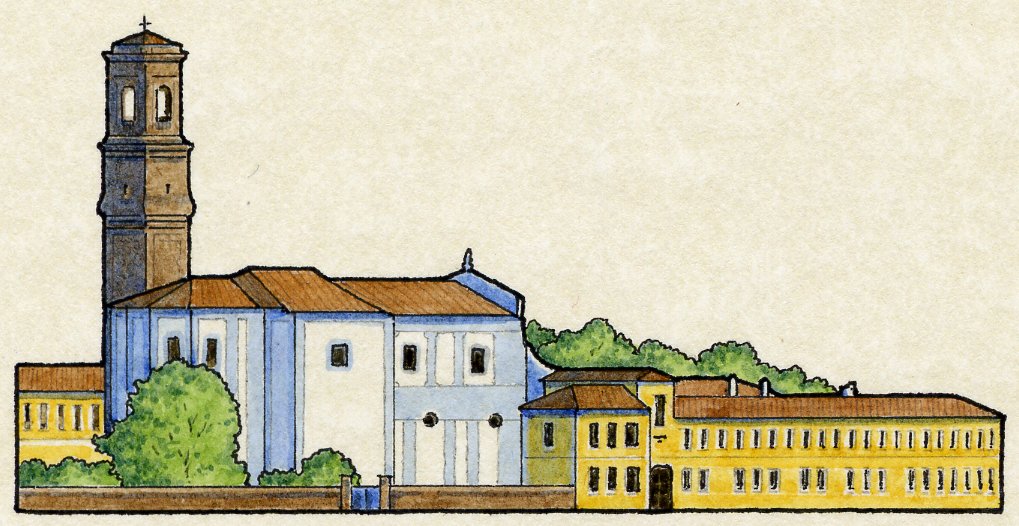Description

The church
of Saint Ambrogio della Vittoria was built in bricks, but inside it
presents a
structure extremely variegated of materials and methods used for
growing the
building's decorum.
The filler
is a mix of lime, dust of marble, washed sand and glue of casein, whose
plasticity and finesse of slurry. For this reason it was the favorite
material
in the production of refined decorous such as volutes, cartouches,
cornices,
until having sheer statues supported by souls of wires.
Inside of
the church, the filler is alternated with the presence of refined and
wises
wood carves, like the ones under the choir and the organ,
in turn covered by colored varnishes but
transparent to highlight the technical stature of working.
The
balustrades in marble are presents in the entry of laterals chapels,
and
especially the one which signed the access to the presbytery, they are
also
valuables examples of stone-cutter’s masters art, as well as about the
will of
monks to use a large quantity of valuables materials like marble to
underline
their economic power. In reverse, the intern columns of the church were
realized with plaster in imitation of
marble,
method that in the 18th century reach an unequaled quality,
like
testimony of the large peripetia of decorator masters. Here it is so
that the
presence of fake marble isn't qualified as much as absence of
necessaries
founds for retrieval of the original material, but as full adhesion at a relish which founded reason of
admiration in
the visual illusion.
Finally
it's very important the presence of altars in “scaiola”, a variety of
natural
chalk cooked at high temperatures, ground and sifted till obtaining a
clay
paste. Subdivided and colored in various
pigments, the paste allowed a perfect imitation of marble
engraves using
only poor materials. Since the great difficulty necessary for its
processing,
the “scaiola” derives from this
feature its preciousness .




